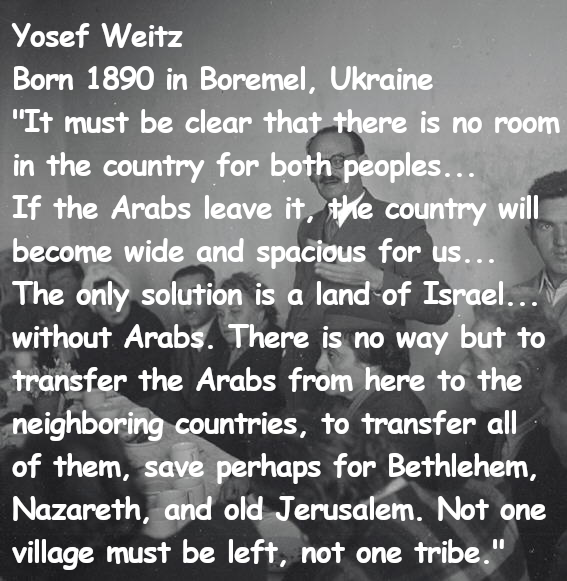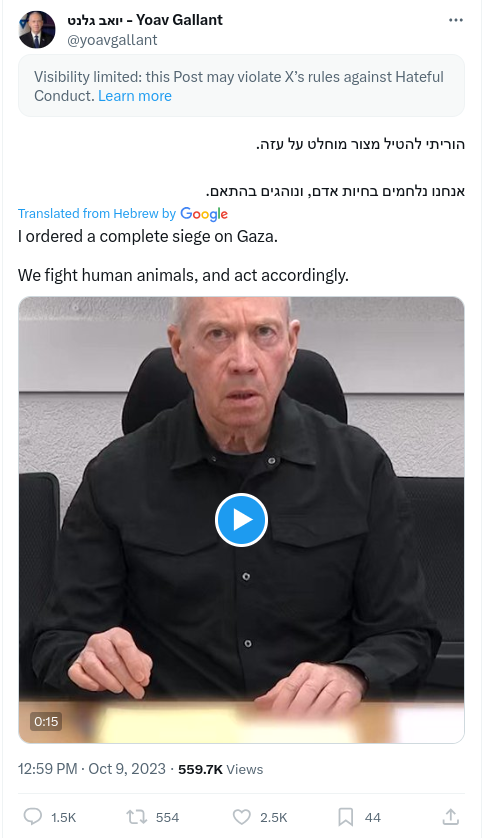when looking at statements from Yosef Weitz, Raphael Eitan, Benjamin Netanyahu, and Yoav Gallant, especially those involving dehumanizing language like "human animals," several themes emerge that contribute to a broader narrative:
Purpose: Dehumanization is often used to justify actions against another group by stripping them of their human qualities, making it psychologically easier for the perpetrators of violence or oppressive policies to rationalize their actions.
Impact: Such language can desensitize both the speaker's supporters and the general population to the suffering of the dehumanized group, leading to a culture where discriminatory or violent acts might not face the same level of moral scrutiny.
Zionist Ideology: There's a thread of continuity in the rhetoric from early Zionist leaders like Weitz, through military figures like Eitan, to political leaders like Netanyahu and Gallant. This continuity reflects certain ideological strands within Zionism that view the establishment and preservation of a Jewish state as requiring demographic control or manipulation.
Expansionist Policies: Statements like these often accompany or justify policies aimed at land acquisition or maintaining Jewish demographic dominance in certain areas, which can be seen as part of a broader historical trend of settlement and control.
Internal Cohesion: Such rhetoric might be employed to galvanize support among those who feel threatened or insecure about the demographic balance or security of Israel. It can serve to unify a base around a common, albeit negative, identity against an "other."
External Perception: These statements impact how Israel is perceived internationally, often drawing criticism and possibly affecting diplomatic relations or alliances.
Violation of Norms: As discussed, such rhetoric runs counter to international legal standards and ethical norms regarding human dignity and rights.
War Crimes and Crimes Against Humanity: Statements that promote or could lead to actions like forced transfer or collective punishment might contribute to situations where war crimes or crimes against humanity could be committed.
Identity and Territory: These statements reflect a narrative where the identity of the state is closely tied to a particular ethnic or religious group, often at the expense of recognizing the rights of other groups within the same territory.
Security vs. Rights: There's an underlying theme where the security of one group is presented as necessitating the suppression or removal of rights from another, framing the conflict in existential terms.
Obstacle to Peace: The use of dehumanizing language significantly hinders peace processes by eroding trust and making mutual recognition of rights and humanity difficult.
Cycle of Violence: Such rhetoric can perpetuate cycles of violence and retaliation, as it reinforces narratives of victimhood and aggression on both sides.
The "bigger picture" here involves:
This pattern underscores the complexity of the Israeli-Palestinian conflict, where language, policy, and historical actions intertwine, making reconciliation and mutual understanding an ongoing challenge.


